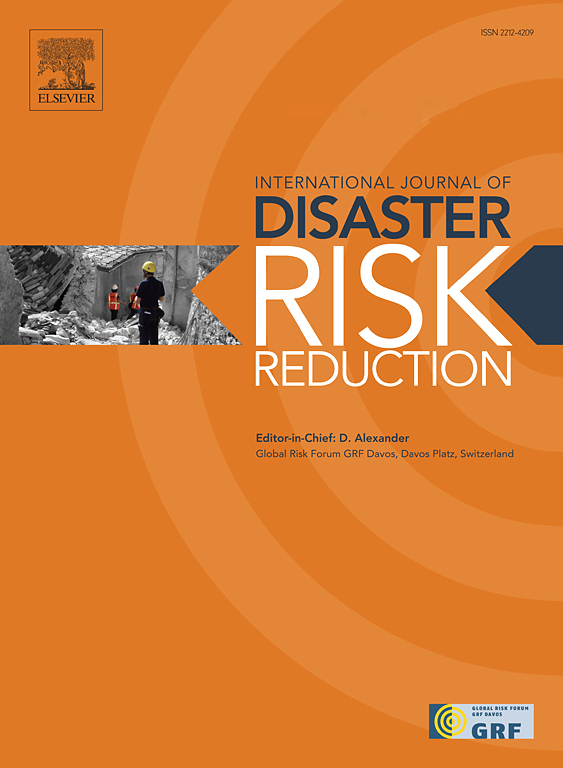Socioeconomic vulnerability of urban flooding in the context of IPCC AR4 framework in Hyderabad, India
IF 4.2
1区 地球科学
Q1 GEOSCIENCES, MULTIDISCIPLINARY
International journal of disaster risk reduction
Pub Date : 2025-02-21
DOI:10.1016/j.ijdrr.2025.105334
引用次数: 0
Abstract
The growing number of natural hazards raises concerns about the increased vulnerability of the population in cities, particularly in the global south. Recently the Hyderabad city has faced severe loss of life and property from frequent flooding and other extreme events. The vulnerability assessment in this context becomes a key to planning and responding to urban floods. In the present research, the principal component analysis (PCA) was applied to evaluate the levels of the different indices viz exposure, sensitivity, adaptive capacity, and potential impact. Results identify that historically the lack of disaster preparedness along with the urban land development has amplified the vulnerabilities in the core and old part of the city. While the wards having better infrastructural development and access to urban services show low level of vulnerability. The poor urban infrastructural development amplifies the vulnerability while the enhanced adaptive capacity lowers the vulnerability of population. The discussion also highlights that urban flooding amplifies the existing socioeconomic vulnerabilities in the city and, women, non-workers and socio-economically marginalized groups are highly vulnerable. The strengthening of governance through mutual efforts of users and managers for urban land management can reduce the impacts of vulnerability.
求助全文
约1分钟内获得全文
求助全文
来源期刊

International journal of disaster risk reduction
GEOSCIENCES, MULTIDISCIPLINARYMETEOROLOGY-METEOROLOGY & ATMOSPHERIC SCIENCES
CiteScore
8.70
自引率
18.00%
发文量
688
审稿时长
79 days
期刊介绍:
The International Journal of Disaster Risk Reduction (IJDRR) is the journal for researchers, policymakers and practitioners across diverse disciplines: earth sciences and their implications; environmental sciences; engineering; urban studies; geography; and the social sciences. IJDRR publishes fundamental and applied research, critical reviews, policy papers and case studies with a particular focus on multi-disciplinary research that aims to reduce the impact of natural, technological, social and intentional disasters. IJDRR stimulates exchange of ideas and knowledge transfer on disaster research, mitigation, adaptation, prevention and risk reduction at all geographical scales: local, national and international.
Key topics:-
-multifaceted disaster and cascading disasters
-the development of disaster risk reduction strategies and techniques
-discussion and development of effective warning and educational systems for risk management at all levels
-disasters associated with climate change
-vulnerability analysis and vulnerability trends
-emerging risks
-resilience against disasters.
The journal particularly encourages papers that approach risk from a multi-disciplinary perspective.
 求助内容:
求助内容: 应助结果提醒方式:
应助结果提醒方式:


